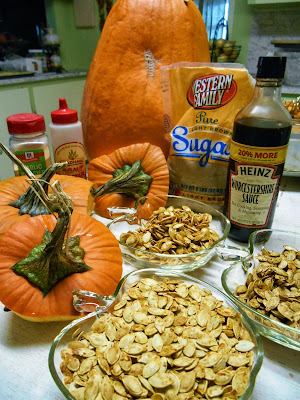The flower looks similar to a native sunflower. It flowers late in the season. I didn't get a picture of the blooming flower head before I was hit by a frost.
just before blooming in the late summer
the stocks are covered with large leaves
and can grow up to 7 or 8 feet tall
Now is the time to cut down the stocks, dig the tubers for replanting next years crop,
and cover roots you want to eat with a thick mulch, (hay or stray bales laid over the tubers work well) before the ground freezes.
To harvest, simply roll back the bales of hay or straw and dig out the tubers. Leave in a few for next years crop if you did not replant in another area.
I can harvest this tuber until December and then the ground freezes too solid.
If your winters are mild you can harvest tubers from the ground all winter.
cut down the stocks after frost and use as mulch for the next years crop
The Jerusalem Artichoke will rapidly multiply to provide you with an abundance of nutty tasting, delicious tubers. Eat this vegetable raw ( slice and quickly drop in a vinegar/lemon/water bath to keep them from darkening) as a crunchy finger food, grated or cut into salads. Use in place of water chestnuts in recipes. Steamed, or sauteed in stir-fry dishes. The skin is thin and does not need to be peeled, just wash thoroughly to remove all dirt.
to harvest, lift the tubers from the soil with a shovel
if you have loamy soil the tubers can be lifted out by pulling up the stalks
To replant, cut large tubers into smaller pieces making sure each piece has an "eye". Plant smaller tubers whole. Place about 4-6 inches underground. Add wood ashes for potassium. It is needed to to form the carbohydrate-rich root. However don't use to much nitrogen to avoid lush top growth and small root growth. Cover with a mulch for the winter.
After digging, store in a bag in the refridgerator. They will only last about 3 weeks before going soft.
NOTE: if the gophers are eating most of my tubers over the winter, I have had success going to the grocery store (in the early spring) and purchasing "sunchokes" and planting them.
BOILING: Boil quickly since overcooking toughens them. Serve with a white sauce or butter. Chives and parsley are good herbs to accompany the chokes.
BAKING: Cut away the small nodules and par-boil for 10 minutes. Peel and use as you would potatoes in a stew or place in a baking dish and add dots of butter, salt and pepper.
FRYING: Cut into strips and fry in a shallow pan of oil until golden brown. Cut into thin slices and fry for a home-made potato chip



































.jpg)
.jpg)



